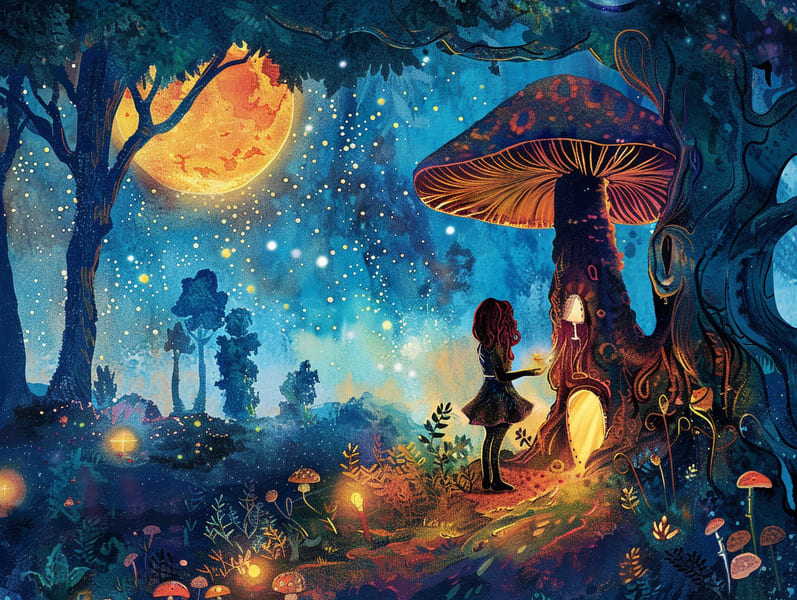The Beginning of Classic Fairy Tales and Its Consistent Captivation.
The Beginning of Classic Fairy Tales and Its Consistent Captivation.
Blog Article

Vintage fairy tales have ancient roots. These narratives have been relayed from one generation to the next long before they were ever documented. They sprang from a variety of societies, including Eastern traditions. They were initially narrated among adults, often carrying themes and messages relevant to the societal norms and beliefs of the time.
Jacob and Wilhelm Grimm, Jacob and Wilhelm (the Grimm brothers), were among the first to collect and release many of these beloved fairy tales. Their anthology, "Grimm's Children's Stories," included tales like "Ashenputtel," "The Bread Crumb Trail," and "Schneewittchen," which have since become mainstays in the world of timeless fairy tales. Similarly, H. C. Andersen's whimsical narratives, such as "The Story of the Little Mermaid," and "The Ugly Duckling," have gained the love worldwide, guaranteeing their place in the pantheon of famous fairy tales.
Despite being ancient, fairy tales remain as applicable as ever, especially as nighttime stories for kids. These whimsical stories are now available in diverse formats, including vibrantly illustrated books, whimsical animations, and web-based fairy tales.
Their enduring popularity can be attributed to several whimsical characteristics:
Key Lessons: Old fairy tales often share important moral lessons. Tales like "The Wolf and the Liar" teach the importance of truth, while "The Story of the Tortoise and the Hare" point out the benefits of determination and unpretentiousness. These stories offer young readers clear distinctions between virtue and vice, developing their moral compass in a tender yet important way.
Compassion and Knowledge: Traditional fairy tales frequently depict heroines facing tests and troubles, provoking young readers to understand with their struggles and celebrate their triumphs. For instance, "Beauty's Beast" reveals the value of seeing inner beauty to understand the real person of a individual, cultivating empathy and appreciation.
Cultural Knowledge: Many ancient fairy tales are rich in the cultural contexts from which they arose. Engaging with these stories can provide enlightening views into different historical contexts, strengthening a sense of world appreciation and discernment.
Inventiveness and Fantasy: The whimsical elements in timeless fairy tales—magical spells—stimulate children’s visions and dreams. These fairy tales take readers to mythical realms, invigorating inventive dreams and a sense of amazement that endures a lifetime.
Timeless fairy tales are not only spellbinding but also didactic. They serve as spellbinding tools in promoting various thinking and feeling skills in the young. When old fairy tales are voiced, they cultivate communication skills by bringing new word meanings and complex sentence structures. This practice also nurtures hearing abilities and attention, as young ones follow the story, excited to see what happens next.
Furthermore, discussing the themes and characters of classic fairy tales can develop problem-solving abilities and critical thinking. Young readers learn to pinpoint patterns, predict happenings, and grasp cause and effect. These conversations also benefit young ones reveal their thoughts and feelings, fostering their emotional intelligence.
In today’s digital era, the presence of digital storybooks has made these tales more accessible than ever. Web-based platforms and online apps extend comprehensive collections of classic fairy tales that can be accessed or listened to anytime, anywhere. Fairy tales narrated are particularly well-received, giving an fun way for little ones to enjoy these captivating stories. Read-aloud books and voiced videos lead characters and settings to life, often enhanced by mesmerizing harmonies and musical scores that boost the tale journey.
The timeless charm of ancient fairy tales lies in their ability to adapt to present eras while continuing with their underlying messages. Contemporary versions of these narratives often show more multicultural characters and modern settings, making them pertinent to today’s audience. However, the essential messages of fearlessness, benevolence, and fair play remain unchanged, continuing to strike a chord with kids of all ages.
Ancient fairy tales also offer a sense of contentment and knowability. They feature a ordered narrative with a straightforward beginning, middle, and end, often wrapping up with the closure of conflicts and the triumph of morality over wickedness. This dependability can be encouraging for young readers, making available a sense of unwaveringness in an ever-changing world.
Old fairy tales continue to fascinate and edify new generations, maintaining their elegance and significance in modern society. As nighttime stories for kids, they supply a perfect blend of magic and knowledge, enhancing moral values, empathy, website and creativity. The availability of free fairy tales online and the likability of fairy tales told out loud ratify that these classic tales remain accessible to new generations.
By preserving and relating these stories, we continue to extol the rich tapestry of tales and cultural heritage. Whether you are experiencing a richly illustrated book, perusing a cyber collection, or listening on an read-aloud story, the grace of Grimm's fairy tales is always within reach. These stories remind us of the immortal spell of tales and its ability to unify us across centuries and lands.
Even if you are perusing a vividly illustrated book, accessing a internet library, or listening to an read-aloud story, the captivation of children's fairy tales is always within reach.
These stories reveal of the eternal effect of tales and its ability to join us across time and space, establishing a link that enchants and educates alike.